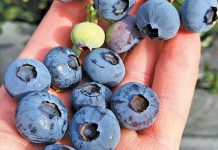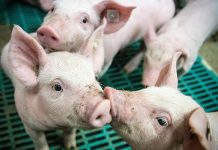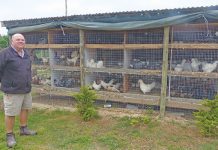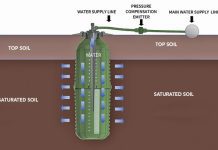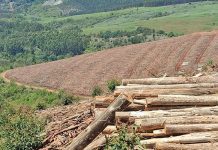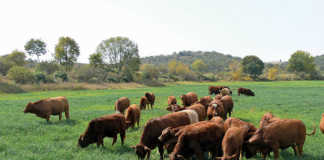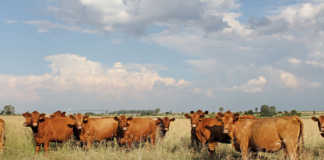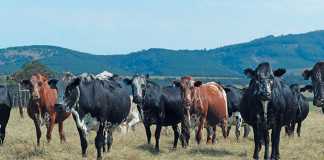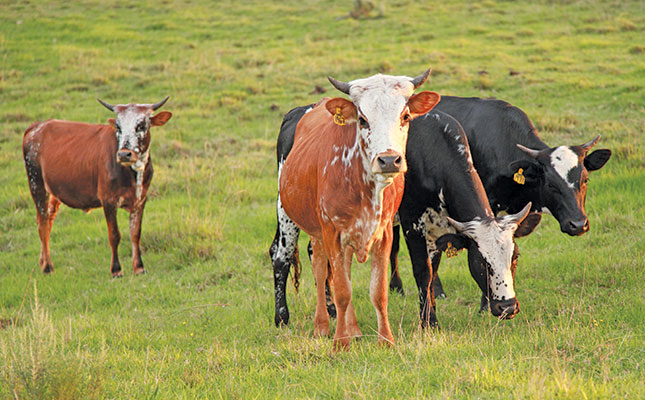
Photo: FW Archive
The world’s population is expected to increase from around eight billion people at present to about 10 billion by 2050. With this growth comes an increase in the demand for food, presenting farmers in Africa and Asia with a significant opportunity to improve production and, in turn, their livelihoods.
As incomes in advanced and low- to middle-income countries (LMICs) increase, so too does the demand for dairy and meat in these regions.
It is estimated that in order to achieve food security by 2050, livestock enterprises and efficiency will have to grow by 2% to 2,5% per annum. Due to the pressures on agriculture in developed countries, a significant proportion of this growth has to occur in the regions of greatest need, namely Africa and Asia.
An increase in demand for meat and dairy also means an increase in demand for inputs such as land, water, animal feed and labour, which will drive up the cost of livestock production.
Climate change is another challenge to this, and the need for animals that are productive in hotter temperatures and drier climates is on the rise. Animals that are resistant to parasites and vector-borne diseases and can produce more with fewer inputs are also essential in the quest to improve animal production and efficiency.
To produce superior cattle breeds, farmers need to employ genomic selection to estimate the genetic merit of individual animals. In terms of small-scale and communal farmers, this means intensive record-keeping of their animals to select for those with desirable characteristics.
Traditional technologies that deliver incremental changes will assist in improving productivity, in the same way they have in the past. One study demonstrated that through the use of long-established technologies, US dairy farmers now require 21% fewer cows, 23% less feed, 65% less water and 90% less land to produce one billion kilograms of milk than they did in 1944.
However, these traditional technologies are no longer sufficient by themselves to deliver the major increases in productivity now required.
Potentially, the greatest opportunity to significantly improve the productivity of livestock industries in LMICs is via the use of DNA- based information through genomic selection.
Traditional genetic improvement programmes, based on measuring large numbers of pedigree-recorded animals in well-defined cohorts for the full range of economically important productive and adaptive traits, is generally not possible for smallholder farmers in LMICs.
Now, however, genomic data, in conjunction with information and communication technologies, offer new opportunities to increase the rates of genetic gain by characterising indigenous and crossbred animals for use in conservation, crossbreeding and within-breed selection programmes, with the aim of improving economically important traits.
A hindrance to selection
In both advanced economies and LMICs, the main limitation to genomic (and traditional) selection in extensively managed livestock is the difficulty and expense of measuring animals in appropriately sized contemporary groups for the full range of economically important productive and adaptive traits.
Technology may, in the future, provide the means of measuring animals, but it cannot replace the statistical imperative that, for these measurements to be beneficial for genetic improvement programmes, contemporary groups of appropriate structure and sufficient size are required.
Unless the design is adequate in terms of contemporary group size and structure, the measurements will not provide useful predictions of genetic merit. This applies to traditional genetic improvement programmes, as well as those capturing beneficial traits through genomic selection.
Accurate record-keeping
As suggested in the table (see page 47), the measurement of most phenotypes required for genetic improvement programmes in smallholder herds and flocks is generally not feasible in the field. Where measurement is feasible, there is an additional requirement that accurate records be maintained for individual animals.
Such record-keeping is often an additional challenge for smallholder farmers, mainly because platforms that can effectively collate and make sense of such highly fragmented data are lacking.
However, recent research projects such as African Dairy Genetic Gains (ADGG) are now adapting digital tools such as mobile phones and tablets to capture performance data for easy-to-measure traits such as milk yield, body condition score (BCS) and artificial insemination records.
For example, in the ADGG project, milk yield, heart girth (for predicting body weight), and BCS are collected monthly using software based on the Open Data Kit installed on tablets and mobile phones, employing the services of performance-recording agents.
In addition, iCow, a technological platform owned by the private company Green Dreams, a partner in ADGG, has provided feedback information to farmers for herd management through text messages and web-based training. This performance data has enabled the genomic prediction and selection of first-rate young bulls for breeding in Tanzania.
Obstacles to capturing data
The main challenges of the data-capture system are the high cost of employing performance-recording agents and poor Internet connectivity to upload the information.
The most obvious data issues relate to inconsistencies in the dates for various animal events, such as birth, calving, and milking. This leads to a large number of animals being rejected from any meaningful genetic analysis.
Another consideration is how such record-keeping can be made sustainable beyond the life of associated research projects, while recognising that the farmers who provided the records remain the owners of that data beyond the life of the projects. This is an issue that needs to be directly addressed by each of those projects.
ADGG has been examining several business model options for the sustainability of the record-capturing system; these include piloting mobile phone-based systems for direct data capture from farmers through monthly alerts, engaging government officials in the respective country to encourage their involvement, and exploring private company participation.
Currently, direct farmer-incentivised systems are being tested in Kenya as a possible long-term solution to this challenge.
Even where measurement is feasible, it is likely that many smallholder herds and flocks are unable to generate within-herd genetic linkages through the use of multiple sires to generate contemporary groups. Thus the contemporary group design requirements also present significant challenges.
For this reason, the most feasible option for smallholder herds and flocks to participate in genetic improvement programmes is likely to be through the use of specifically designed reference, resource or nucleus populations aimed at the identification of genetically superior sires for subsequent use in smallholder herds and flocks.
However, such reference populations need to be managed under conditions that are as similar to the smallholder and pastoral systems as possible. Past attempts, where government research centres were used, have generally failed.
Infrastructure and human capacity
Smallholder farmers in LMICS face two major problems in respect of breed improvement:
- A lack of infrastructure required to undertake the on-farm management and phenotyping of animals, laboratory testing of animal samples, data capture and storage, computing facilities, and so on;
- A lack of human capacity, particularly in areas of technological capability, data analysis and interpretation.
The issue of data capture and storage is starting to be addressed through the use of portable devices that don’t require on-site Internet connection.
However, in the absence of research projects that can assist with infrastructure development, many of these issues remain significant challenges to the implementation of livestock genetic improvement programmes in these countries, since it is unclear how business models might develop for data capturing in most LMICs.
A way forward?
One opportunity that is being explored in conjunction with ADGG is the possibility of developing a web interface that would enable data from livestock resource populations from countries and industries not currently serviced by ADGG to be uploaded to the ADGG platform, and then undertaking genomic prediction using the pipeline developed by ADGG at the International Livestock Research Institute in Nairobi.
If this could be achieved, other livestock industries and countries would not need to develop their own separate software or pipeline, thereby generating some efficiencies.
The recent launch of the African Animal Breeding Network (AABNet) is in direct response to the lack of human capacity, with the aim of strengthening collaboration among academia, industry, farmers’ organisations, the public sector, philanthropic organisations, and development agencies to drive the development and implementation of genetic improvement programmes across Africa.
Professional development and capacity- building across all sectors of the livestock genetic improvement chain, from smallholders to academics, are key pillars of AABNet.
However, the expansion of existing resource populations and the development of new ones are entirely dependent on the availability of new funding for this purpose, and where that funding will come from is unclear.
Therefore, perhaps the greatest opportunity to secure the proven and significant economic, social and environmental benefits of genomic selection for smallholder farmers in LMICs is to attempt to engage a range of government, non-government and philanthropic organisations to give priority to improving the rates of genetic gain in livestock farmed by smallholders in those countries.
This article has been edited. Read the full article, here: ‘Challenges and opportunities in applying genomic selection to ruminants owned by smallholder farmers’.

